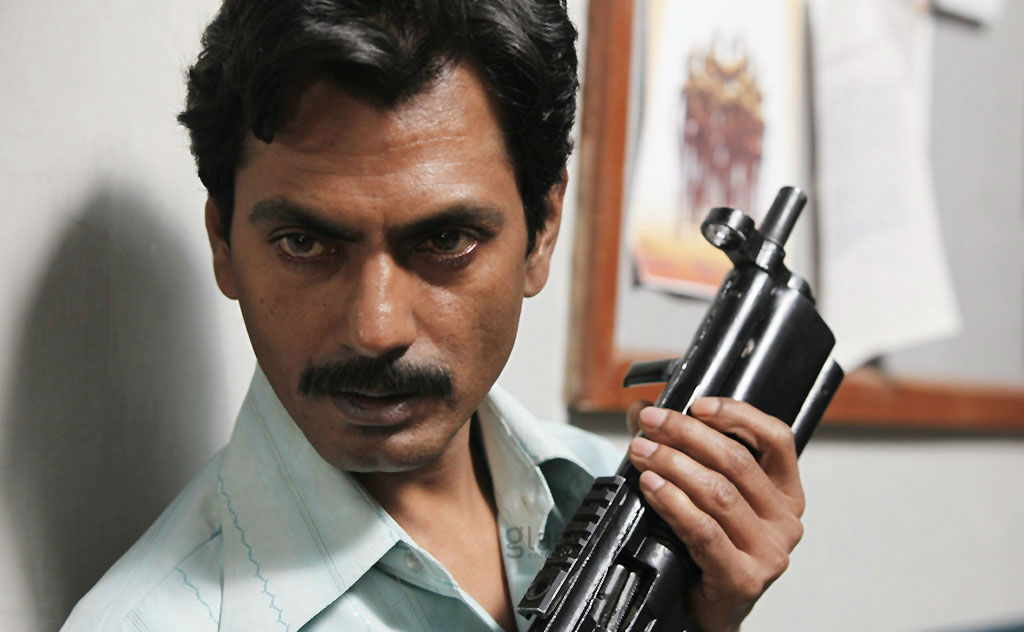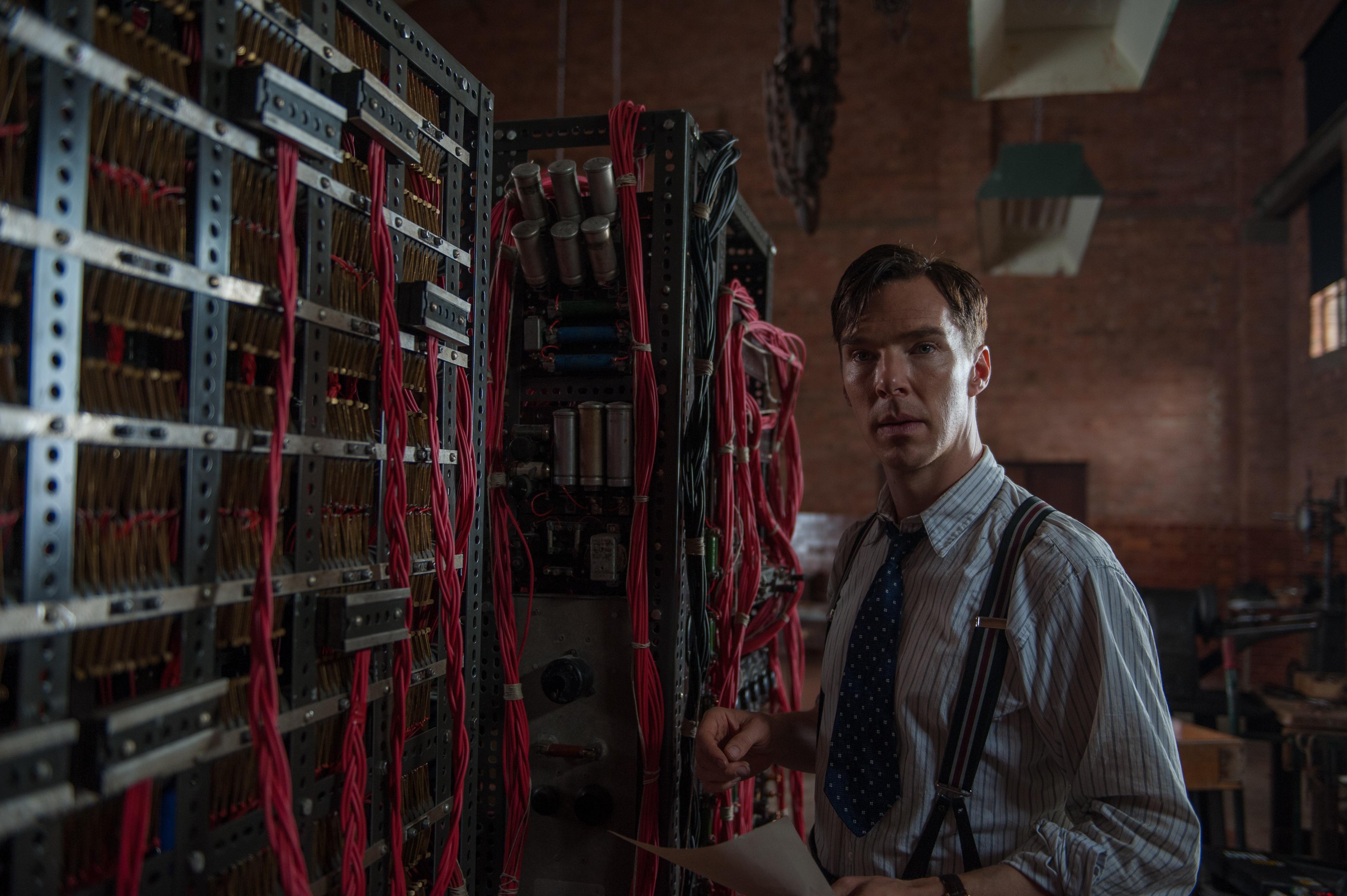Gangs of Wasseypur 1 and 2 (2012, Dir. Anurag Kashyap):
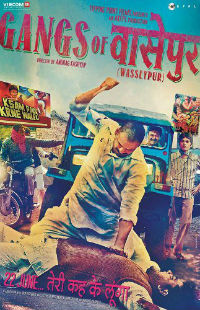
Large desire is endless poverty.
— Indian proverb
A dog always stays a dog.
— Gangs of Wasseypur
Gangs of Wasseypur begins and ends in a hail of gunfire — standard operating procedure for a standard gangster epic, one might think. Think again: this two-part movie series, spanning four generations and over five hours of screen time, might be all about gangsters, but it’s anything but standard, because it’s the kind of epic few filmmakers attempt these days. There was a time when Hollywood would churn out movies of this stripe with semi-regularity, even as recently as Scorsese’s Gangs of New York (2002); now it falls to foreign dream factories like Bollywood, with their casts and crews of literal thousands, to take up the slack. Though it might follow in the footsteps of Scorsese, Gangs of Wasseypur‘s thrilling melange of the local, the international and the cultural makes it one unique creation indeed.
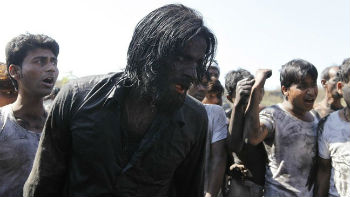 Loosely based on true goings-on among the criminal classes in the backwater town of Wasseypur, Gangs aims to do nothing less than document the coming of age of a nation through the cockeyed perspective of local racketeers, hoods and murderers. We start in the ’40s, as cocky cart driver Shahid Khan (Jaideep Ahlawat) catches the ire of Sultana, a Qureshi bandit, after impersonating him for a series of train robberies. Shahid eventually seeks refuge in a nearby village as the muscleman for a coal mining operation run by ruthless Ramadhir Singh (Tigmanshu Dhulia), but when he threatens to get too ambitious for his own good, Ramadhir promptly has him assassinated. Shahid’s son Sardar Khan (Manoj Bajpai) escapes the slaughter and vows revenge when he becomes an adult, thus setting off an increasingly complex chain reaction of revenge and one-upmanship, with battle lines drawn between three families: Sardar and his upstart clan, Ramadhir and his ineffectual son J.P., who become “respectable” public officials, and Sultana Qureshi’s savage descendants, who usually opt for murder as the quick solution to any problem. Forget the good, the bad and the ugly: this is the bad, the badder and the baddest.
Loosely based on true goings-on among the criminal classes in the backwater town of Wasseypur, Gangs aims to do nothing less than document the coming of age of a nation through the cockeyed perspective of local racketeers, hoods and murderers. We start in the ’40s, as cocky cart driver Shahid Khan (Jaideep Ahlawat) catches the ire of Sultana, a Qureshi bandit, after impersonating him for a series of train robberies. Shahid eventually seeks refuge in a nearby village as the muscleman for a coal mining operation run by ruthless Ramadhir Singh (Tigmanshu Dhulia), but when he threatens to get too ambitious for his own good, Ramadhir promptly has him assassinated. Shahid’s son Sardar Khan (Manoj Bajpai) escapes the slaughter and vows revenge when he becomes an adult, thus setting off an increasingly complex chain reaction of revenge and one-upmanship, with battle lines drawn between three families: Sardar and his upstart clan, Ramadhir and his ineffectual son J.P., who become “respectable” public officials, and Sultana Qureshi’s savage descendants, who usually opt for murder as the quick solution to any problem. Forget the good, the bad and the ugly: this is the bad, the badder and the baddest.
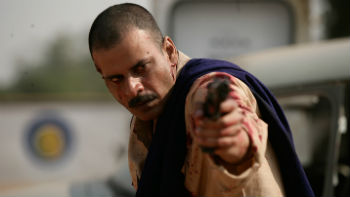 If this set-up reminds you of some American films, the similarity is purely intentional. Gangs of Wasseypur has cinematic influences of all types running through its blood. One minute it’s matter-of-fact and raw in the vein of Bonnie and Clyde — the film doesn’t pull punches in depicting violence — and the next it dips into absurdities out of a Leone flick (a murder is preceded by an argument over the best of use of fruits from the local market; attempted showdowns go awry when cheap makeshift revolvers blow up in the users’ hands). Sardar’s path to revenge is delayed and stymied by life itself: “It isn’t personal, just business,” Michael Corleone would say, but in Gangs of Wasseypur‘s case, the business of being a petty criminal continually gets in the way of the personal. Speaking of The Godfather, we also track the fortunes of Sardar’s passel of sons, most of them legitimate, some of them unusually named (“Perpendicular” and “Definite”), and in a twist of irony, Fredo-like stoner Faizal (Nawazuddin Siddiqui) becomes the bloodthirstiest and most dangerous of them all.
If this set-up reminds you of some American films, the similarity is purely intentional. Gangs of Wasseypur has cinematic influences of all types running through its blood. One minute it’s matter-of-fact and raw in the vein of Bonnie and Clyde — the film doesn’t pull punches in depicting violence — and the next it dips into absurdities out of a Leone flick (a murder is preceded by an argument over the best of use of fruits from the local market; attempted showdowns go awry when cheap makeshift revolvers blow up in the users’ hands). Sardar’s path to revenge is delayed and stymied by life itself: “It isn’t personal, just business,” Michael Corleone would say, but in Gangs of Wasseypur‘s case, the business of being a petty criminal continually gets in the way of the personal. Speaking of The Godfather, we also track the fortunes of Sardar’s passel of sons, most of them legitimate, some of them unusually named (“Perpendicular” and “Definite”), and in a twist of irony, Fredo-like stoner Faizal (Nawazuddin Siddiqui) becomes the bloodthirstiest and most dangerous of them all.
 And that merely scratches the surface of what goes on in Gangs of Wasseypur. There’s bawdy interludes in which Sardar puts his less-than-subtle moves on the local beauties, including a Bengali woman (Reema Sen) who may prove to be his family’s ultimate downfall; sweet moments such as when Danish (Vineet Kumar Singh), Sardar’s eldest son and a lover rather than a fighter, falls for a female member of the Qureshi tribe, leading to a star-crossed fate that Shakespeare would approve of; operatic climaxes such as when a primary character dies under the withering gaze of a noonday sun; hilarious passages such as when tough-guy Faizal’s advances on the comely Mohsina (Huma Qureshi) are rebuffed, leaving him a sniveling wreck; and of course, plenty of music that comments on and sends up the action, ranging from the profane (“All hail my assholiness! / I lie with such silken finesse”) to the heartfelt (“Whatever’s wrong, try to set it right, dear / Don’t lose hope and try to fight some more, dear”). Meanwhile, the India around these would-be desperadoes evolves, ineluctable, unstoppable. We move from coal and shantytowns to city slums and ironworks, from knives to homemade bombs to machine guns, from hardscrabble crime families to dozens of unattached punks looking to rub each other out. Despite the zingy soundtrack and the feistiness of Mohsina and Sardar’s put-upon wife Nagma (Richa Chadda), this ain’t your typical sunny, well-scrubbed Bollywood musical. It’s most definitely a bad man’s world, where not even the easily bribed cops rise above the muck. Above all, this is a world entranced, obsessed with, and seduced by the movies, whether it’s the locals huddling up to watch the latest soap on TV, or Faizal finally winning Mohsina’s heart by decking himself in shades and a new pager, and strutting about like the macho matinee heroes at the local cinema. When Ramadhir wearily proclaims the secret of his success — “Every fucker’s got his own movie playing inside his head. Every fucker is trying to become the hero of his imaginary film. As long as there are fucking movies in this country people will continue to be fooled” — it’s both a rebuff and a sardonic commentary on the movie itself.
And that merely scratches the surface of what goes on in Gangs of Wasseypur. There’s bawdy interludes in which Sardar puts his less-than-subtle moves on the local beauties, including a Bengali woman (Reema Sen) who may prove to be his family’s ultimate downfall; sweet moments such as when Danish (Vineet Kumar Singh), Sardar’s eldest son and a lover rather than a fighter, falls for a female member of the Qureshi tribe, leading to a star-crossed fate that Shakespeare would approve of; operatic climaxes such as when a primary character dies under the withering gaze of a noonday sun; hilarious passages such as when tough-guy Faizal’s advances on the comely Mohsina (Huma Qureshi) are rebuffed, leaving him a sniveling wreck; and of course, plenty of music that comments on and sends up the action, ranging from the profane (“All hail my assholiness! / I lie with such silken finesse”) to the heartfelt (“Whatever’s wrong, try to set it right, dear / Don’t lose hope and try to fight some more, dear”). Meanwhile, the India around these would-be desperadoes evolves, ineluctable, unstoppable. We move from coal and shantytowns to city slums and ironworks, from knives to homemade bombs to machine guns, from hardscrabble crime families to dozens of unattached punks looking to rub each other out. Despite the zingy soundtrack and the feistiness of Mohsina and Sardar’s put-upon wife Nagma (Richa Chadda), this ain’t your typical sunny, well-scrubbed Bollywood musical. It’s most definitely a bad man’s world, where not even the easily bribed cops rise above the muck. Above all, this is a world entranced, obsessed with, and seduced by the movies, whether it’s the locals huddling up to watch the latest soap on TV, or Faizal finally winning Mohsina’s heart by decking himself in shades and a new pager, and strutting about like the macho matinee heroes at the local cinema. When Ramadhir wearily proclaims the secret of his success — “Every fucker’s got his own movie playing inside his head. Every fucker is trying to become the hero of his imaginary film. As long as there are fucking movies in this country people will continue to be fooled” — it’s both a rebuff and a sardonic commentary on the movie itself.
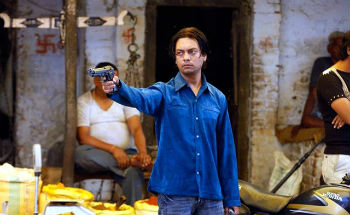 Dramatic and comic, ribald and morose, arrogant and irreverent — Gangs of Wasseypur is all of these, but seldom are so many disparate tones and influences as well-digested as they are here. All the major players in the cast create memorable impressions, from Bajpai’s steely Sardar Khan all the way down to Zeishan Quadri as Sardar’s amoral bastard kid Definite Khan. Adept at the action (the single tracking shot that opens the film is a beaut) as well as the comedic elements, director and writer Anurag Kashyap keeps things brisk yet expansive. Even though the whole shebang is nearly five and a half hours long, there’s nary an ounce of fat or self-satisfaction in the proceedings. While Western filmmakers would go either ultra-ironic or ultra-gritty with this material, Kashyap has a distinctly Indian perspective — call it wry resignation. These ruffians’ lives might be cheap, but they’re not taken lightly, and Kashyap views them with an unsparing yet essentially compassionate eye.
Dramatic and comic, ribald and morose, arrogant and irreverent — Gangs of Wasseypur is all of these, but seldom are so many disparate tones and influences as well-digested as they are here. All the major players in the cast create memorable impressions, from Bajpai’s steely Sardar Khan all the way down to Zeishan Quadri as Sardar’s amoral bastard kid Definite Khan. Adept at the action (the single tracking shot that opens the film is a beaut) as well as the comedic elements, director and writer Anurag Kashyap keeps things brisk yet expansive. Even though the whole shebang is nearly five and a half hours long, there’s nary an ounce of fat or self-satisfaction in the proceedings. While Western filmmakers would go either ultra-ironic or ultra-gritty with this material, Kashyap has a distinctly Indian perspective — call it wry resignation. These ruffians’ lives might be cheap, but they’re not taken lightly, and Kashyap views them with an unsparing yet essentially compassionate eye.
By the time we arrive in 2002, and circle back to the shootout that begins the film, all that’s left is escalation, with the meanderings of the plot and the characters funneled into a final frenzy of bloodletting. The last showdown between Ramadhir and the Khans is apocalyptic enough, but when one of the main characters reveals late-game regrets about what has become of his life before he dies in a blaze of glory, it rings a little untrue. (It’s no surprise that in real life, the gangster this character is based on is still alive, kicking and unrepentant.) Maybe we can chalk it up to the magic of the movies, where romantically tragic endings are still possible. The never-ending cycle of violence and retribution grips real-life Wasseypur to this day; in Gangs of Wasseypur, the only way out is to get out of town. As the survivors of the final carnage stare, silent and dazed, at the skyscrapers of Mumbai at film’s end, strangers swallowed up by the new India, a fresh voyage has only just begun. Whether that road leads to nowhere remains to be seen, but the journey Gangs of Wasseypur takes makes for one compelling ride, and marks Kashyap as a filmmaker to keep an eye on.
